Welcome to our comprehensive guide on hydraulic hose clamps!
If you’re involved in fluid systems and hydraulic machinery, you know the importance of secure connections and reliable performance. Hydraulic hose clamps play a vital role in ensuring the safety, efficiency, and longevity of these systems.
In this article, we will explore the ins and outs of hydraulic hose clamps, their functions, types, installation methods, and much more. Whether you’re a professional in the field or simply interested in learning more, this guide has got you covered.
What Are Hydraulic Hose Clamps?
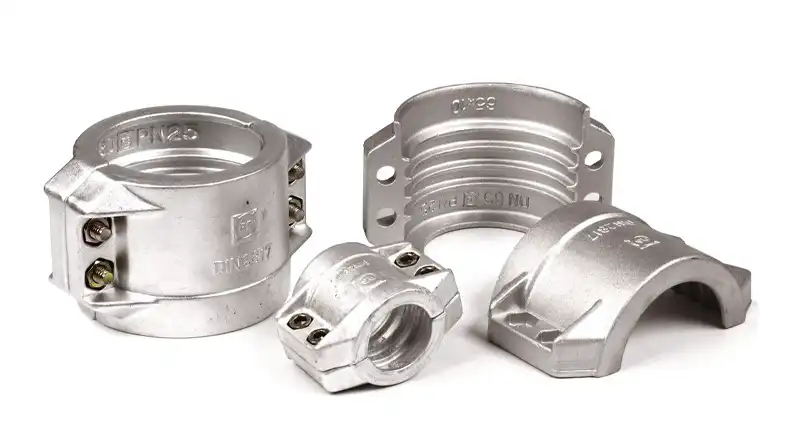
Hydraulic hose clamps, also known as hose clips or hose clamps, are mechanical devices used to secure hydraulic hoses onto fittings, preventing leaks and ensuring a secure connection. They provide the necessary clamping force to hold hydraulic hoses in place, even under high-pressure conditions.
Hydraulic hose clamps only prevent leaks. False
While preventing leaks is a crucial function, hydraulic hose clamps also:
- **Withstand pressure:** They provide a secure seal to contain high-pressure hydraulic fluid within the hose.
- **Reduce vibration and movement:** Clamps help to minimize hose movement and vibration, which can cause wear and tear and ultimately lead to leaks.
- **Enhance system stability:** By securing the hose to fittings, clamps contribute to the overall stability and reliability of the hydraulic system.
Hydraulic hose clamps are essential for preventing leaks in hydraulic systems. True
Hydraulic hose clamps securely fasten hydraulic hoses to fittings, preventing fluid leakage. They provide a strong and reliable connection, ensuring the integrity of the hydraulic system. Properly installed and maintained clamps are crucial for:
- **Preventing fluid loss:** Minimizing costly fluid leaks and environmental contamination.
- **Maintaining system pressure:** Ensuring optimal system performance and efficiency.
- **Preventing hose failure:** Reducing the risk of hose blowouts and potential damage to equipment.
- **Enhancing safety:** Mitigating potential hazards associated with leaking hydraulic fluid.
What Are Hydraulic Hose Clamps Used for
Hydraulic hose clamps serve several critical functions:
Secure Hose Connections:
- Prevent Leaks: Their primary purpose is to create a tight seal between the hose and the fitting it’s connected to. This prevents leaks of hydraulic fluid, which can cause damage to equipment, environmental contamination, and safety hazards.
- Maintain Pressure: The secure connection ensures that the hydraulic system maintains the necessary pressure for proper operation.
Support and Protection:
- Reduce Strain: Clamps help to distribute the force of the pressurized fluid evenly, reducing stress on the hose and preventing potential ruptures or failures.
- Prevent Abrasion: They protect the hose from abrasion and wear caused by contact with other components or surfaces.
- Maintain Position: Clamps help to keep the hose in its intended position, preventing movement and potential interference with other equipment.
Hydraulic Hose Mounting Clamps
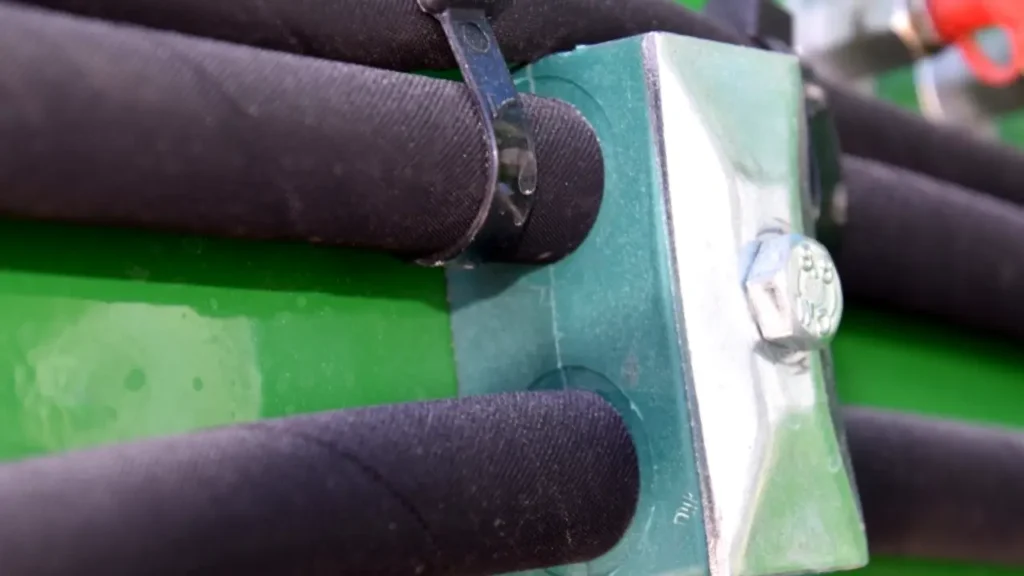
Hydraulic hose mounting clamps are specifically designed to support and secure hydraulic hoses during installation and operation.
Purpose of using a mounting hydraulic hose clamp
Support and Stabilization:
- Prevent sagging and drooping of hoses, especially in long runs or where they are subject to gravity.
- Reduce stress on the hose and fittings caused by weight or movement.
Prevent Abrasion: Protect the hose from contact with sharp edges, moving parts, or other surfaces that could cause wear and tear.
Maintain Position: Secure the hose in its intended position, preventing movement and potential interference with other components.
Types of Mounting Clamps:
- Strap Clamps: Used to secure hoses to various surfaces, such as machinery frames, walls, or ceilings.
- Channel Clamps: Guide hoses along specific paths, often used in conjunction with channels or tracks.
- Vibration Isolators: Reduce the transmission of vibrations to the hose, minimizing fatigue and wear.
- Specialized Clamps: Available for specific applications, such as high-temperature environments or applications with extreme vibration.
Benefits of Using Mounting Clamps:
- Improved Hose Life: Reduced stress and abrasion lead to longer hose lifespan and reduced maintenance costs.
- Enhanced System Performance: Improved hose support contributes to more reliable and efficient hydraulic system operation.
- Improved Safety: Minimize the risk of hose failures and potential hazards.
- Reduced Downtime: Minimize equipment downtime due to hose failures.
Improve Safety:
Minimize Fire Hazards: By preventing leaks and ruptures, hose clamps contribute to a safer operating environment, reducing the risk of fires caused by leaking hydraulic fluid.
In essence, hydraulic hose clamps are essential safety and performance components in any hydraulic system. They ensure reliable operation, minimize downtime, and enhance the overall safety of the system.
Proper Hydraulic Hose Clamp Selection
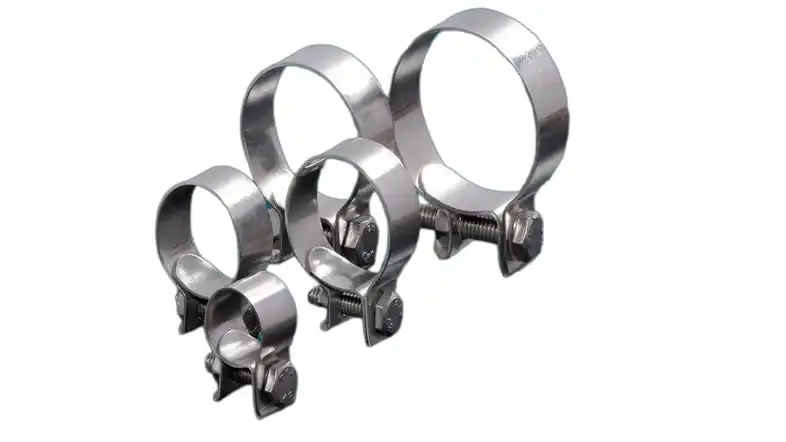
Selecting the right hydraulic hose clamp is crucial for maintaining the integrity of fluid systems. Proper clamp selection ensures a leak-free connection, minimizes the risk of hose blowouts, and promotes overall system efficiency. It is essential to consider factors such as hose diameter, application requirements, pressure ratings, and compatibility with fluid types.
Hydraulic Hose Clamp Types
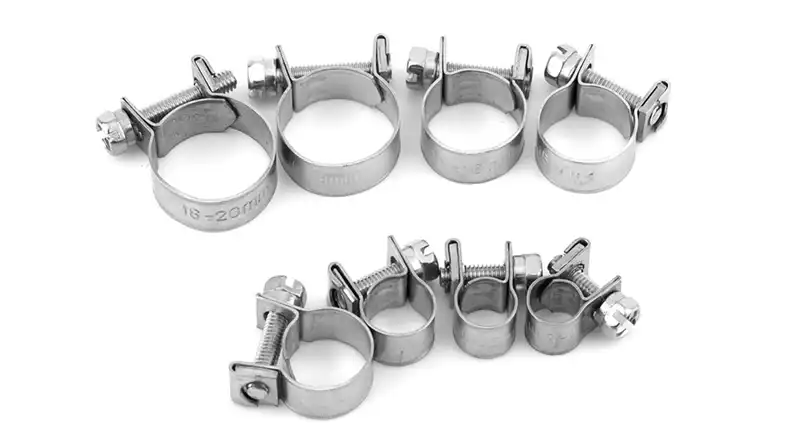
Hydraulic hose clamps come in various designs and configurations to suit different applications and hose sizes. Let’s explore some common types of hydraulic hose clamps:
- Worm Gear Clamps: These clamps feature a worm gear mechanism that tightens the clamp around the hose. They are versatile and widely used in a range of industries.
- T-Bolt Clamps: T-Bolt clamps provide a high clamping force and are ideal for applications requiring strong and reliable connections.
- Ear Clamps: Ear clamps, also known as Oetiker or pinch clamps, use a crimping tool to create a secure and tamper-resistant connection.
- Spring Clamps: Spring clamps utilize a spring-loaded mechanism to apply pressure and secure the hose. They are commonly used in automotive applications.
Hydraulic Hose Routing Clamps
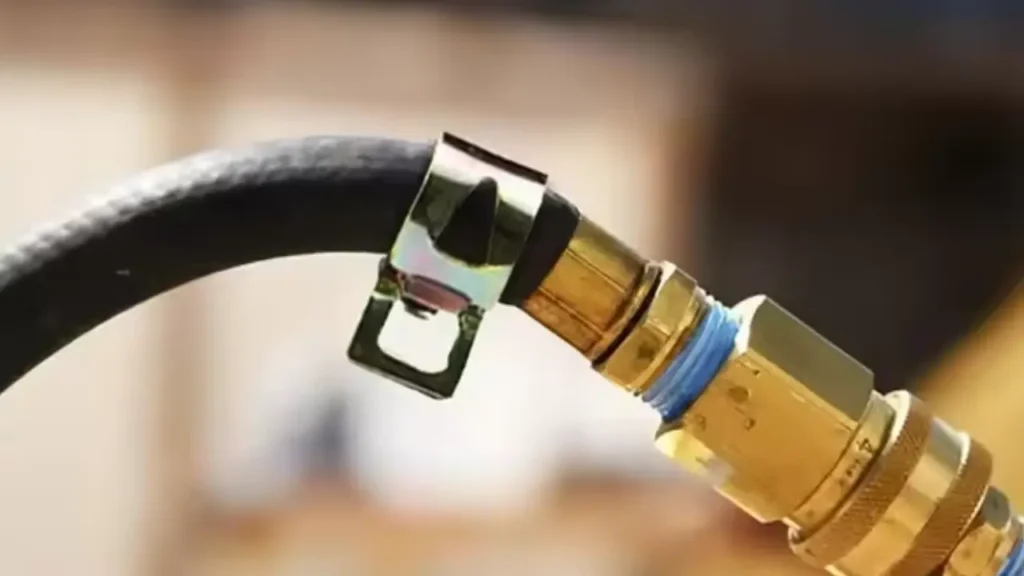
Hydraulic hose routing clamps are essential components for safely and effectively managing hydraulic hose installations. Here’s a breakdown:
Purpose:
Support and Protection:
- Prevent Abrasion: Clamps protect the hose from abrasion and wear caused by contact with sharp edges, moving parts, or other surfaces.
- Reduce Strain: They support the hose’s weight, preventing excessive stress and potential damage due to bending, twisting, or pulling.
- Maintain Position: Clamps secure the hose in its intended position, preventing movement and potential interference with other components.
Improve Safety:
- Prevent Leaks: By preventing excessive movement and stress, clamps help to minimize the risk of leaks and hose failures.
- Reduce Fire Hazards: Proper routing and support can help prevent accidental hose ruptures and the potential for fire hazards.
Types of Routing Clamps:
- Strap Clamps: Simple and versatile, used to secure hoses to various surfaces.
- Channel Clamps: Designed to guide hoses along specific paths, often used in conjunction with channels or tracks.
- Vibration Isolators: Reduce the transmission of vibrations to the hose, minimizing fatigue and wear.
- Specialized Clamps: Available for specific applications, such as high-temperature environments or applications with extreme vibration.
Benefits of Using Routing Clamps:
- Increased Hose Life: Reduced wear and tear leads to longer hose lifespan and reduced maintenance costs.
- Improved Safety: Minimize the risk of leaks, ruptures, and fire hazards.
- Enhanced System Performance: Improved hose support and protection contribute to more reliable and efficient hydraulic system operation.
- Reduced Downtime: Minimize equipment downtime due to hose failures.
Key Considerations:
- Hose Size and Type: Select clamps appropriate for the size and type of hydraulic hose.
- Application Requirements: Consider the specific operating conditions, such as temperature, pressure, vibration, and exposure to chemicals.
- Installation: Ensure proper installation to achieve maximum effectiveness.
By using appropriate routing clamps, you can significantly enhance the performance, safety, and longevity of your hydraulic hose installations.
Choosing the Right Hydraulic Hose Clamp
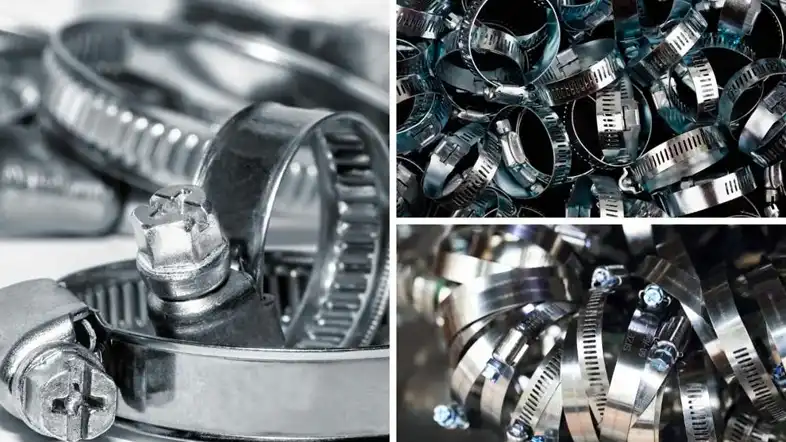
Factors to Consider
When selecting a hydraulic hose clamp, keep the following factors in mind:
- Hose Diameter: Ensure the clamp is compatible with the diameter of hydraulic hose you’re using.
- Material: Choose a clamp made from high-quality materials like stainless steel or carbon steel for durability and resistance to corrosion.
- Pressure Rating: Consider the maximum pressure the clamp can handle to ensure it meets your system requirements.
- Temperature Range: Check the temperature range the clamp can withstand to ensure it is suitable for your application.
- Application: Consider the specific application and environment in which the clamp will be used. Factors such as vibration, exposure to chemicals, and external forces should be taken into account.
Benefits of Choosing the Right Clamp
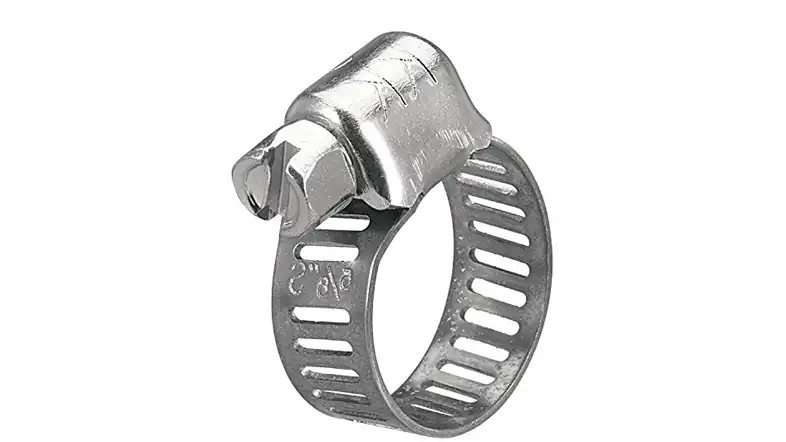
Selecting the appropriate hydraulic hose clamp offers several benefits:
- Leak Prevention: The right clamp ensures a tight and secure connection, minimizing the risk of leaks and fluid loss.
- Enhanced Safety: A properly secured hose prevents accidents, such as hose blowouts, which can result in injuries and damage to equipment.
- Improved System Efficiency: By maintaining a leak-free connection, the clamp helps optimize system performance and efficiency.
- Longevity of Components: Proper clamping reduces stress on hoses and fittings, extending their lifespan and reducing maintenance costs.
Installation Methods for Hydraulic Hose Clamps
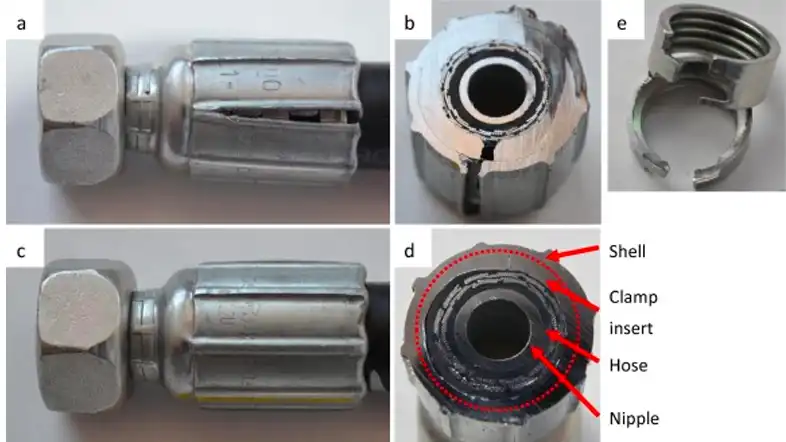
Method 1: Worm Gear Clamps
- Slide the clamp onto the hose, ensuring it is positioned over the fitting.
- Tighten the clamp using a screwdriver or wrench, making sure it applies even pressure around the hose.
- Check the tightness by gently tugging on the hose. It should remain secure without any movement.
Method 2: T-Bolt Clamps
- Position the clamp over the hose and fitting, aligning the bolt holes.
- Insert the T-bolt through the holes and thread the nut onto the bolt.
- Tighten the nut using a wrench until the clamp applies sufficient pressure on the hose.
Method 3: Ear Clamps
- Use a crimping tool specifically designed for ear clamps.
- Place the ear clamp over the hose and fitting, ensuring it covers the barb completely.
- Position the crimping tool on the ear and squeeze it firmly to create a secure connection.
Maintenance and Inspection of Hydraulic Hose Clamps
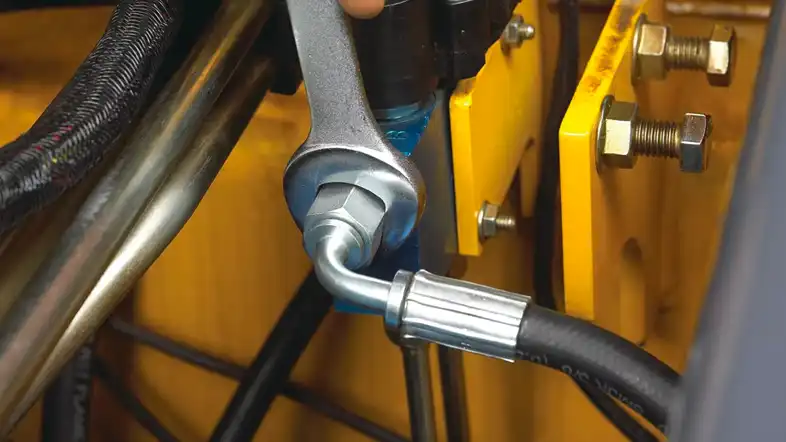
To ensure the optimal performance and longevity of hydraulic hose clamps, regular maintenance and inspection are essential. Follow these guidelines:
- Visual Inspection: Regularly inspect clamps for signs of damage, corrosion, or wear. Replace any clamps that show signs of deterioration.
- Tightness Check: Periodically check the tightness of clamps to ensure they are securely holding the hoses in place. Tighten or readjust as necessary.
- Environmental Factors: Consider the operating conditions and environmental factors that may affect the performance of the clamps. Take necessary precautions to protect them from extreme temperatures, chemicals, or excessive vibration.
Common Issues and Troubleshooting
Leaks
Cause: Insufficient clamping force or worn-out clamps.
Solution: Replace the clamps with ones that provide adequate clamping force. Ensure proper installation and verify the compatibility with hose diameter and pressure requirements. 5 Reasons That Cause Hydraulic Hose Leak
Hose Blowouts
Cause: Improper clamp selection or installation, excessive pressure, or weakened hoses.
Solution: Select the appropriate clamp for the application, considering pressure ratings and hose specifications. Reinstall the clamp following proper installation methods. Inspect hoses for any signs of wear or damage and replace them if necessary.
Corrosion
Cause: Exposure to moisture or corrosive substances.
Solution: Choose clamps made from corrosion-resistant materials like stainless steel. Regularly inspect clamps and replace any that show signs of corrosion.
FAQs About Hydraulic Hose Clamps
What are the key components of a hydraulic hose clamp?
The key components include the band, screw, housing, and locking mechanism.
Can hydraulic hose clamps be reused?
Yes, hydraulic hose clamps can be reused, but it is important to inspect them for any signs of wear or damage before reuse. Replace any clamps that are no longer in optimal condition.
Are hydraulic hose clamps compatible with different types of fluids?
Yes, hydraulic hose clamps are designed to be compatible with a wide range of fluids. However, it is important to consider the material compatibility and ensure the clamp is suitable for the specific fluid being used.
Can hydraulic hose clamps withstand high-pressure conditions?
Yes, hydraulic hose clamps are designed to withstand high-pressure conditions. However, it is crucial to select clamps with the appropriate pressure ratings to ensure optimal performance and safety.
How often should hydraulic hose clamps be inspected and replaced?
Hydraulic hose clamps should be inspected regularly, ideally during routine maintenance checks. Replace any clamps that show signs of wear, damage, or corrosion to maintain system safety and efficiency.
Can hydraulic hose clamps be used in other industries besides hydraulic systems?
Yes, hydraulic hose clamps have applications in various industries beyond hydraulic systems. They are commonly used in automotive, industrial, marine, and agricultural sectors where secure hose connections are necessary.
Conclusion
Hydraulic hose clamps are crucial components in fluid systems, ensuring secure connections and reliable performance. By selecting the right clamp, installing it correctly, and conducting regular maintenance, you can enhance safety, prevent hydraulic hose leaks, and optimize the efficiency of your hydraulic machinery.
Remember to consider factors such as clamp type, material, pressure ratings, and compatibility with fluid types to make informed decisions. Stay proactive with inspections and troubleshooting to address any issues promptly.
By prioritizing the quality and reliability of hydraulic hose clamps, you can ensure the smooth operation of your fluid systems and machinery.

